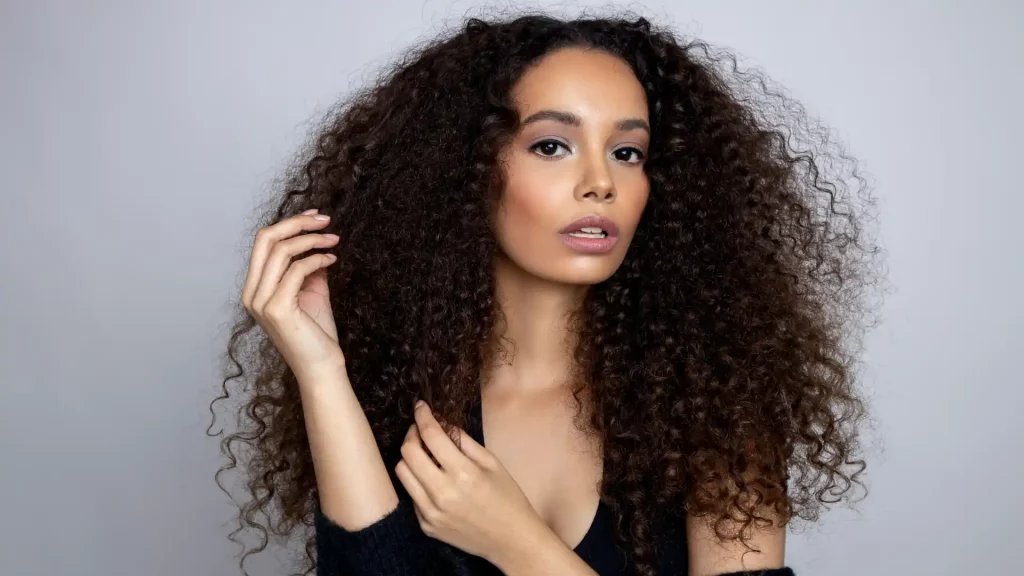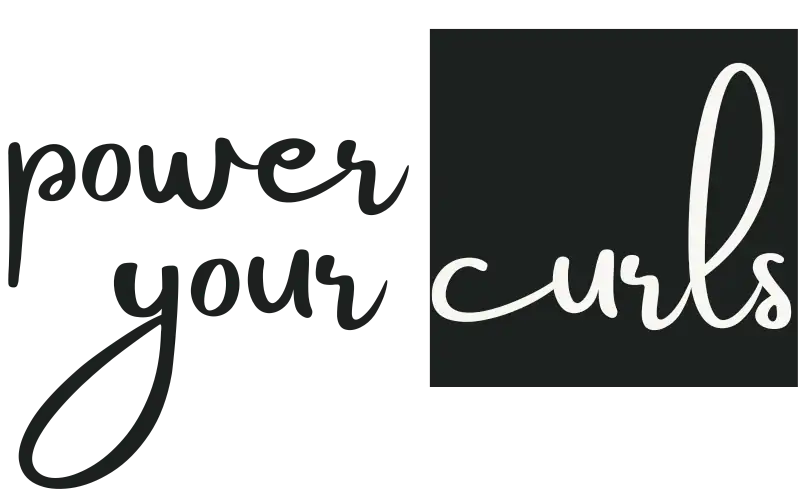You feel like your curls need a trim, you visit the salon, you get your beautiful curls butchered by a regular stylist, you regret your decision- and the vicious cycle continues. Well, it is time to break this cycle by switching over to something more compatible with your curl patterns- yes, I’m talking about curl-specific haircuts or ‘curly cuts’.
Consider this article as the most comprehensive guide you’ll find on the internet about curly cuts where I’ll gloss over the basics of curly cuts, how they’re done, when you should get one, the associated costs, how to look for curly cut specialists, curly cut aftercare routine and so much more- a complete information-packed post.
What is curly cut?
A curly cut is a technique designed specifically for curly and wavy hair types. The idea is to cut the hair in a way that works with the natural curl pattern, creating shape and movement while reducing frizz and enhancing definition.
If you have hair texture ranges within wavy (type 2), curly (type 3), or, coily (type 4) you will benefit the most from a curly cut which will retain your hair texture and definition as is and in some cases, even enhance your wave or curl patterns.
Why do you need one?
The thing about curly and wavy hair is that it grows in all different directions. The growth patterns are less uniform than straight hair. So when you get a traditional haircut with blunt edges and layers that ignore the curl pattern, it ends up working against your natural texture. This leads to a lack of shape, puffy frizz-balls or your curls falling limp and undefined. Not exactly the gorgeous mermaid waves or perfect corkscrew coils you dream of!
That’s where curly cuts step in.
how is A curly cut any different from Regular haircuts?
A curly cut/trim is quite different from a traditional or “normal” haircut in several key ways:
- During a formal pre-cut appointment, a curly specialist analyzes exactly how your curls and waves grow, their thickness, and their formations. This informs how the hair is sectioned and cut to best complement what is naturally happening.
- Cutting wet hair straight can disguise natural texture and growth patterns. Hence most curly cuts are executed on dry hair as it allows the specialist to see curls and waves in their natural state and cut accordingly.
- Blunt edges and ends are a no-go for curly cuts. Curly cuts incorporate notching, slide-cutting, and point-cutting to remove bulk and weight.
- Precise graduation of layers is applied. Too many layers or choppy layers can make waves and curls go crazy. Expert blending creates seamless fullness and shape.
- Texturizing happens throughout the interior of the curls. Stylists use thinning techniques to encourage springy clumps rather than single frizzy strands.
- Afterward, your stylist hands you a care routine specially catered for your curl type for you to follow until your follow-up cut.
Types of curly cut
No two curls are the same, so naturally, haircuts on different curl patterns are different. The curly cut is not a single entity but rather an umbrella term to accommodate the various types of hair-cutting techniques associated with different curl patterns, the most popular ones among them being
1. the deva cut
Developed and perfected by the Devachan Salon, the Deva Cut technique is a special technique for cutting wavy, curly, or coily hair. This technique is performed on completely dry hair and generally involves your stylist taking a ‘curl by curl’ approach (trimming one curl at a time) from angles that complement growth patterns. This creates soft movement and tons of volume.
2. The Ouidad cut
The Ouidad Carving and Slicing technique is another famously sought-after curly cut technique developed by Ouidad Salon. It involves some customized layering with the sole intent of trimming the infamous ‘pyramid heads’ caused by your curls not being clumpy enough and lying flat around the crown but becoming bushier at the ends.

3. the CC1 Technique
The CC1 cut is another technique suitable for trimming the uneven bulky sections of curly and wavy hair. The cut involves hair vertically rather than the usual horizontal layers to carefully remove clumps of hair from the bulkiest regions to create a uniform bulk over the head. This cut is beneficial for those of you having non-uniform curl density which makes your hairstyle look lopsided.
4. The Rezo cut
The Rezo Cut is another dry-cutting specialty technique designed specifically for curly hair by renowned curl specialist Nubia Suarez. It involves creating uniformity by removing bulky sections from the head while keeping the maximum length. Rezo cut leaves end unblunted for defined curls that interlock together. If you want a voluminous curly cut that involves retaining your hair length, this is the right cut for you.
Apart from these, there’s a plethora of cutting techniques out there like the tunnel cut, diametric cut, etc, that you can check out.
The Costs of Getting a Curly Cut
Fair warning, curly cuts do not come in cheap, like at all!
A typical curly cut at any premium curl salon will cost anywhere from $150 to $300 based on your hair length/thickness and exactly how specialized the stylist’s methods are. But you can tune it down to $100 if you can score a local curl specialist.
Yep, you heard that right and nope this isn’t a rip-off, the results you get in the form of frizz-free, bouncy, uniform, and voluminous curls pertaining to your natural texture are well worth the high price tag if you ask me.
And here’s the exciting part…while the cut may be a bit pricey, you can stretch out visits much longer than a standard cut! Curly cuts grow out beautifully and last longer before needing maintenance. So the cost doesn’t sound all too bad in the long run.
Choosing a Curly Stylist – This Matters!
The biggest mistake you can make is choosing any traditional stylist and asking for a curly cut. True curly cutting skills require extensive training plus a natural talent for working with textured hair as well as good visualization skills.
Many stylists might be fantastic at coloring hair but actually aren’t that well-versed in dry-cutting techniques. Or they don’t have the eye for working with curl patterns. There’s a real artistry to giving the perfect curly cuts and it’s sort of an intrinsic talent thingy.
Here’s what to look for in identifying specialists truly accomplished at curly cuts:
- Look for specialty training – Many devote specific education to curly techniques like DevaChan or Ouidad. It’s not always required but it demonstrates commitment to curly hair.
- Do they cut curly hair dry? – If a stylist immediately grabs the spray bottle without assessing your dry texture first, keep looking! Quality curly cuts happen on dry locks.
- Have a deep understanding of curls – Test their knowledge of identifying your curl patterns at a glance.
- Adept at layering techniques – Pay attention to how your stylist cuts the hair of the clients before you and if it involves a lot of precise layering. If yes, chances are they’ll be good at dealing with the bulk trimming.
- Can Visualize Hair Density – This is especially important since dry curls can make it hard to estimate the proper density of your curls and make it harder to trim the bulky portions properly.
- Check curly-specific reviews – Generic salon reviews won’t tell you how someone does specifically with curl cuts. Look for feedback from fellow curly clients on their experience.
- Trust your gut – Does this person seem genuinely excited to help you achieve your curly goals? You want someone who geeks out on coil care as much as you do!
Don’t be shy about asking stylists about their experience with curly hair. And check out reviews focusing on curly cuts specifically. This helps find hidden gems passionate about coaxing the best from waves and coils.
Caring For Your Curls Post-Cut
You did it…you found a curly pro and got the cut of your dreams! Gorgeous bouncy coils, smooth defined waves and the perfect curly ‘do. But don’t let your good work go down the drain by not caring properly for your curls. If you incorporate a proper aftercare routine you can push the date of your follow-up cut by up to 4 months!
Regardless of the technique used all post-curly cut routines involve a variation of the following base routine:
- Cleansing: Apply shampoo by gently squeezing the pads of your fingers to disperse the product from roots through to ends. Avoid tangles! Clarify weekly.
- Conditioning: Soak strands thoroughly with water first. Apply conditioner mid-length down avoiding roots. Detangle gently with lots of slip. Rinse gently using palms not fingers.
- Styling and Diffusing: Form curl cast by scrunching in gel on very damp hair. Diffuse evenly after plopping your hair. Once fully dry, scrunch to break the cast.
Follow this routine 2-3 times a week depending on your texture and scalp behaviour. For a more detailed guide check out my post on curly cut aftercare routine.
Is it worth it to get a curly cut after all?
You can’t put a price on rocking your beautiful natural texture with confidence! So, a curly cut is definitely something you should seek if you’re genuinely interested in achieving the full potential of your curls.
